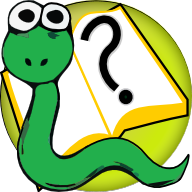Time¶
Introduction¶
Time is important. So you might want to know how long someone has been using your program, or what time of day it is; you might want to make something happen exactly 10 times per second; in any case, you need to know what Python can do about time. This sheet tells you about that.
time module¶
If you say import time then after that you can use a number of functions
for working with times. If you’re curious about what import means, see
Sheet M ( Modules).
Telling the time¶
time.time() gives the number of seconds since the very beginning of the
year 1970. You may think this is a strange way to represent time. You’d be
right too, but fortunately Python provides ways of turning this sort of time
into something more useful.
time.localtime(t), if t is a time value produced by time.time(), is
an object made up of 9 numbers. Here’s what it produced for me using the time
right now:
>>> time.localtime(time.time())
(2007, 8, 6, 17, 7, 19, 0, 218, 1)
Those 9 numbers are, in order:
- 0
the year
- 1
the month of the year (January is 1, December is 12)
- 2
the day of the month
- 3
the hour of the day (in the 24-hour clock: so
17means 5pm- 4
the minute of the hour
- 5
the number of seconds past the minute
- 6
the day of the week (Monday is 0, Sunday is 6)
- 7
the day number within the year (1 January is 1)
- 8
1 if daylight saving time is in force, 0 otherwise
So, you can use this to make a simple clock.
import time
while True:
t = time.localtime(time.time())
print 'The time is', t[3], ':', t[4], 'and', t[5], 'sec'.
time.sleep(1) # We'll explain this in a moment.
Describing the time¶
There’s a complicated function called time.strftime which lets you print
times more neatly. If you want to know the gruesome details, ask your teacher.
Here’s a little example.
>>> import time
>>> time.strftime('%A, %d %B %Y, at %I:%M%p', time.localtime(time.time()))
'Tuesday, 10 August 1999, at 05:41PM'
Waiting¶
time.sleep(0.1234) does absolutely nothing for 0.1234 seconds (or as close
to that as the machine can manage) and then the machine will pick up where it
left off. In our earlier example, when we used time.sleep(1), the computer
paused for one second, then continued the while loop, printed the new time
(one second later), and paused again.
